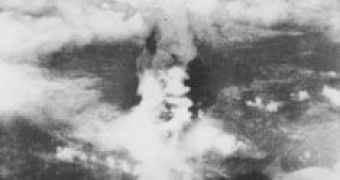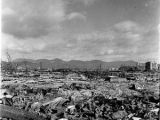Before the beginning of the Second World War, the Hungarian physicist Szilard visited Albert Einstein, who had taken refuge in the US, to communicate him his concern over the possibility that Hitler would try to build the atomic bomb.
That's why he asked him to convince the US president Roosevelt about the benefit of going before the Nazis. On November 1st, 1939, Roosevelt created the Uranium Consulting Committee, charged with building the bomb. Starting with the Japanese attack on Pearl Harbor, in 1941, US invested great resources for the research in the well-known Manhattan Project.
In 16 July, 1945, at 5 a.m., tests performed the first successful atomic explosion in New Mexico. The same day, the US president Harry Truman knew the favorable result, before the opening of the Potsdam conference.
On July, 26th the Allied forces gave Japan an ultimatum asking for immediate unconditioned surrender. Tokyo rejected it on the 28 of July. Few hours after that, Truman ordered the nuclear attack, which had to be carried out starting with 2 of August, after the closing of the conference.
At 2:45 of 6 August, 1945, the B-29 Superfortress bomber "Enola Gay", piloted by the colonel Paul Tibbets, transporting the "Little Boy", the first atomic bomb having a war target, took off from the Tinian island. Soon after 7 a.m., the air alarm sirens started to ring in Hiroshima, a city with a population a little more over 200,000 inhabitants which was waking up at those hours. The B-52 had been detected by observers from the Shikoku islands while flying straight towards Hiroshima.
At 8 a.m., the servants of the antiaircraft canons were hearing the humming of the plane engines, but they could not see it because of the clouds and its flight height, 10,000 m (30,000 feet).
At 8.11 a.m., the plane reached the dropping zone, and four minutes later dropped the bomb. After that, it moved away at maximum speed from the explosion zone.
"Little Boy" descended to the city suspended by a parachute that decreased its speed. 50 seconds after its launch and at 580 m from the soil, it exploded with a force equivalent to 12,500 tons of TNT.
A globe of blinding light covered the city during several seconds; after that, Hiroshima was left wrapped in a black cloud of ash and smoke. In a radius of 4 km (2.5 miles) around the epicenter, the temperature reached 3,000o C, burning everything in a few seconds.
The most affected zone just disappeared; only the skeletons of concrete buildings stood up.
The bridges, the tramways, the railings were reduced to twisted scraps; all that was combustible just volatilized: people, animals, wooden houses, trees - everything.
One year after that, the number of the dead victims was about 120,000, but the effect of the radiation rose it to about 200,000.
Even with that huge blow, Tokyo did not react, and Washington decided to launch the second bomb, three days later, over Nagasaki. On the next day, Japan surrendered.
The Second World War finished with the whole world was speechless in front of the atomic holocaust.

 14 DAY TRIAL //
14 DAY TRIAL // 
